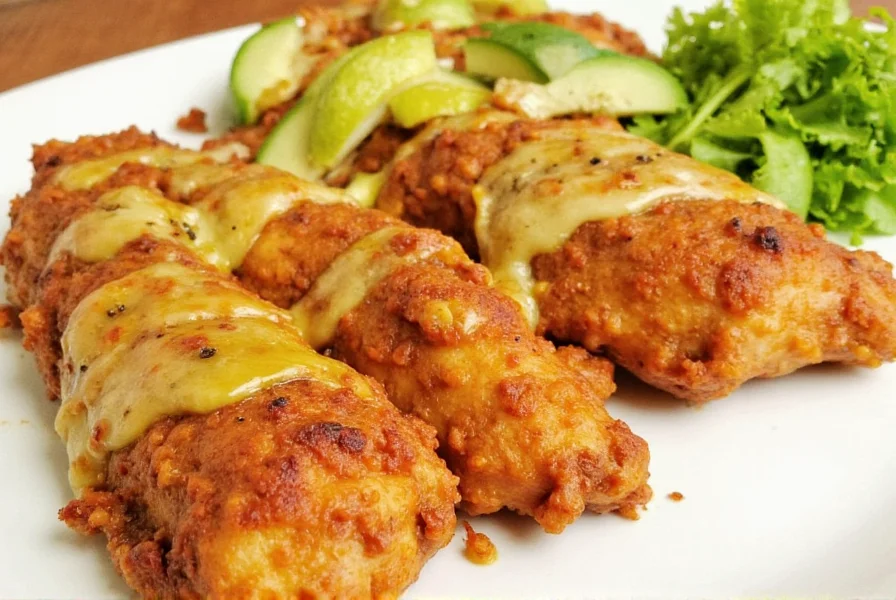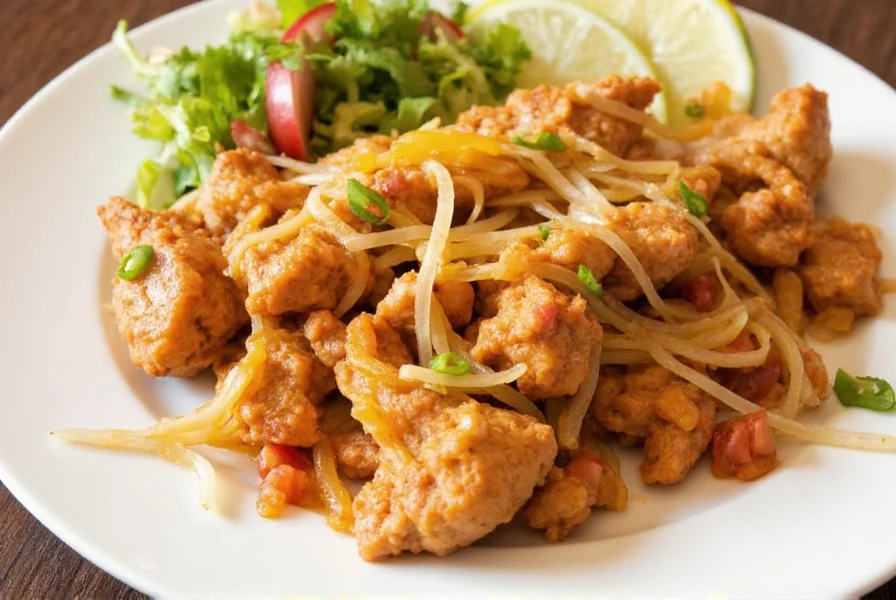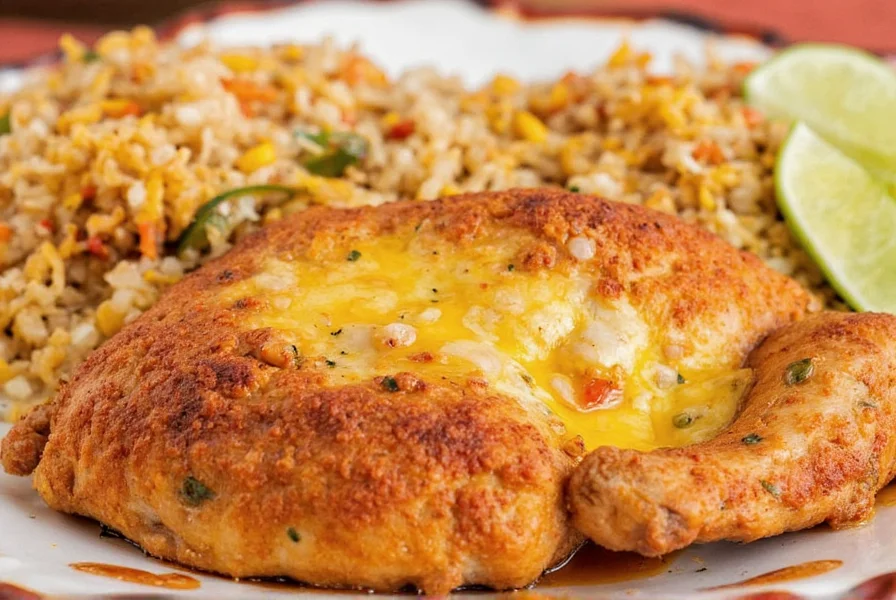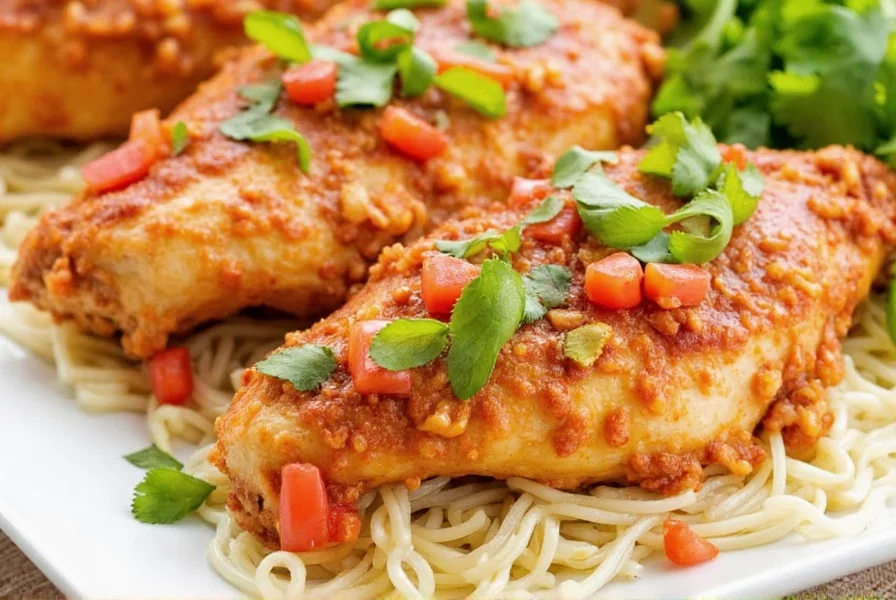Here's how to make perfect enchilada seasoning chicken in just 5 simple steps. This guide delivers authentic Mexican flavor with minimal effort—perfect for busy weeknights or taco night!
Step 1: Prepare the Enchilada Seasoning Blend
| Ingredient | Flavor Profile | Quantity (per 1 tbsp seasoning) |
|---|---|---|
| Chili Powder | Earthy, mildly spicy | 2 tsp |
| Cumin | Nutty, warm, earthy | 1 tsp |
| Garlic Powder | Pungent, savory | 1/2 tsp |
| Oregano (Mexican preferred) | Bitter, aromatic | 1/2 tsp |
| Paprika (smoked optional) | Smoky or sweet depth | 1/2 tsp |
| Onion Powder | Sweet, pungent | 1/2 tsp |
| Black Pepper | Peppery bite | 1/4 tsp |
| Salt | Enhances flavor | 1/4 tsp |
In a small bowl, combine all ingredients. Mix thoroughly until evenly blended. Store in an airtight container for up to 6 months.

Step 2: Coat the Chicken
For 1 lb of chicken (thighs or breasts), sprinkle 1-2 tablespoons of seasoning evenly over the meat. Add 1 tablespoon of olive oil to help the spices adhere. Massage gently to ensure full coverage. For extra flavor, let it marinate for 15-30 minutes.
Step 3: Cook the Chicken
Choose your cooking method based on preference:
- Baking: Preheat oven to 375°F (190°C). Place chicken on a baking sheet and bake for 25-30 minutes until internal temperature reaches 165°F (74°C).
- Grilling: Cook over medium-high heat for 6-8 minutes per side, turning once.
- Pan-searing: Heat oil in a skillet over medium heat. Cook chicken for 5-7 minutes per side until golden brown.

Step 4: Rest and Serve
Let the chicken rest for 5-10 minutes before slicing. This locks in juices and ensures tenderness. Serve with lime wedges for brightness, and pair with cooling sides like cilantro-lime rice or guacamole to balance the spice.
Step 5: Customize with 5 Delicious Variations
Transform your seasoned chicken into these crowd-pleasing dishes:
- Enchilada Chicken Tacos: Fill warm corn tortillas with shredded chicken, avocado crema, and pickled jalapeños.
- Chicken Enchilada Casserole: Layer seasoned chicken, cheese, and enchilada sauce in a baking dish for a hearty one-dish meal.
- One-Pan Chicken Fajitas: Toss sliced bell peppers and onions with extra seasoning. Cook everything together with chicken strips for a quick skillet dinner.
- Enchilada Stuffed Sweet Potatoes: Top roasted sweet potatoes with shredded seasoned chicken, black beans, and Greek yogurt.
- Slow Cooker Chicken Quesadillas: Simmer seasoned chicken in a crockpot with diced tomatoes. Shred and use as filling for crispy quesadillas.
Buying Guide: Choosing the Best Enchilada Seasoning
| Brand | Features | Best For | Heat Level |
|---|---|---|---|
| McCormick Enchilada Seasoning Mix | Classic blend; trusted name; no added preservatives | Traditional recipes | Low-Medium |
| Texas Pride Mexican Seasoning | Robust flavor; slightly spicier; contains MSG | Those who prefer bold taste | Medium-High |
| Badia Original Enchilada Mix | Uses quality chilies; good for both meat and veggies | Everyday cooking | Medium |
| Simply Organic Enchilada Seasoning | Organic, non-GMO; eco-friendly packaging | Health-conscious cooks | Low |
| La Flor Enchilada Seasoning | Traditional Latin American style; minimal additives | Authentic flavor seekers | Low-Medium |
Pro Tips When Buying:
- Check the Salt Content: Opt for low-sodium versions if watching intake.
- Avoid Unnecessary Additives: Look for blends with recognizable spices and minimal fillers.
- Try Sample Sizes: Start with smaller containers to test flavors.
- Consider Heat Levels: Choose mild or "no picante" options if sensitive to spice.
- Read Reviews: Check customer feedback for real-world performance.

Frequently Asked Questions
What's the difference between enchilada sauce and enchilada seasoning?
Enchilada seasoning is a dry spice blend used to flavor proteins and vegetables, while enchilada sauce is a liquid tomato-chile sauce typically poured over enchiladas before baking. The seasoning creates the base flavor, while the sauce adds moisture and depth to finished dishes.
Can I use enchilada seasoning on other proteins besides chicken?
Absolutely! This versatile blend works beautifully on beef, pork, shrimp, tofu, or even roasted vegetables. Adjust cooking times based on the protein you're using, but the flavor profile complements most savory dishes.
How can I make enchilada seasoning less spicy?
Reduce or omit the chili powder and paprika, replacing them with extra cumin or oregano. For store-bought blends, mix with equal parts unsalted breadcrumbs or additional paprika (not smoked) to dilute the heat while maintaining flavor complexity.
Is homemade enchilada seasoning gluten-free?
Yes, when made with pure spices (no added fillers). Most commercial blends are naturally gluten-free, but always check labels for additives like wheat flour. For certified gluten-free options, look for brands with dedicated GF labeling.
How long does cooked enchilada chicken last in the refrigerator?
Properly stored in an airtight container, it stays fresh for 3-4 days. For best results, store chicken separately from sauces or wet ingredients to prevent sogginess. Reheat gently with a splash of broth to restore moisture.
Can I freeze chicken seasoned with enchilada spice mix?
Yes! Freeze raw seasoned chicken for up to 3 months (place between parchment paper to prevent clumping), or freeze cooked chicken for 2-3 months. Thaw overnight in the refrigerator before cooking or reheating.
Why is my enchilada chicken turning out dry?
This usually happens with lean cuts like breasts. Always use oil when applying seasoning to create a moisture barrier, avoid overcooking (165°F internal temperature), and choose thighs for more forgiving results. Resting the meat after cooking is crucial for juiciness.











 浙公网安备
33010002000092号
浙公网安备
33010002000092号 浙B2-20120091-4
浙B2-20120091-4